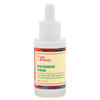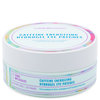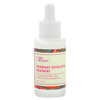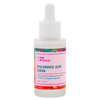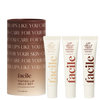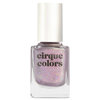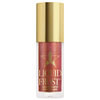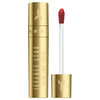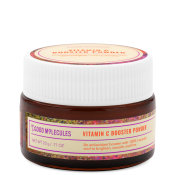 If you’re a person with skin, chances are you’ve experienced redness. From acne to eczema, there are many reasons you might get red, splotchy skin. But not all redness is created equal. Different causes call for different treatments. Read on to learn about the most common types of redness and how to tackle them. (But first, a quick reminder: The internet isn’t your doctor. It’s always best to visit a dermatologist to get an official diagnosis and discuss your treatment options.)
If you’re a person with skin, chances are you’ve experienced redness. From acne to eczema, there are many reasons you might get red, splotchy skin. But not all redness is created equal. Different causes call for different treatments. Read on to learn about the most common types of redness and how to tackle them. (But first, a quick reminder: The internet isn’t your doctor. It’s always best to visit a dermatologist to get an official diagnosis and discuss your treatment options.)
Inflammatory acne
What it is: Inflammatory acne is—you guessed it—acne with a side of inflammation. It can range from your run-of-the-mill pimple to deep, painful cysts. Inflammatory acne is caused by a type of bacteria called P. acnes that colonizes pores clogged up with sebum and dead skin cells.
How to identify it: Look for pimples and bumps with redness, swelling, and tenderness. Inflammatory acne often occurs alongside non-inflammatory acne, which includes blackheads (open comedones) and whiteheads (closed comedones).
How to treat it: There are many ways to treat inflammatory acne, including prescription medications for moderate to severe cases. For some over-the-counter (OTC) options, look for products containing these ingredients:
-
Salicylic acid: a beta hydroxy acid that exfoliates the surface of the skin as well as inside pores
-
Retinoids: ingredients derived from vitamin A (aka retinol) that boost cell turnover and loosen clogged pores
-
Benzoyl peroxide: an antibacterial ingredient that inhibits bacterial growth deep within the pore
-
Azelaic acid: an acid derived from grains that works as an exfoliant, antioxidant, and anti-inflammatory
For inflamed acne, you may also want to incorporate ingredients into your routine that soothe inflammation and repair your skin’s protective barrier, like niacinamide.
Post-inflammatory erythema (aka acne scars)
What it is: Post-Inflammatory erythema (PIE) is the scientific name for the red or purplish marks that acne can leave behind. PIE happens when the capillaries (tiny blood vessels) at the surface of your skin are damaged by things like inflamed acne, popping pimples, cuts, scratches and sunburn.
How to identify it: PIE is often confused with post-inflammatory hyperpigmentation (PIH), which are the brown marks that can show up after a breakout. Unlike PIE, PIH occurs when the skin produces melanin in response to inflammation from acne, sun exposure, and other triggers. It’s possible to tell the difference between PIE and PIH with a simple touch test: If you press down on a PIE mark, it will momentarily disappear or turn white.
How to treat it: Because PIE is caused by damaged blood vessels, it can be tricky to treat. The gold-standard treatment for PIE is pulsed dye laser (PDL) therapy, which works by penetrating into the skin to break down damaged blood vessels. However, there’s anecdotal evidence supporting these topical treatments for PIE:
-
Silicone sheets or gel: thin layers of silicone which are known to reduce the appearance of scars
-
Vitamin C: an antioxidant that boosts collagen production and strengthens capillary walls, which may help reduce redness
-
Niacinamide (vitamin B3): strengthens the skin barrier and reduces inflammation and redness
The good news about PIE is that it usually fades on its own with time. Patience may not be the speediest treatment option, but at least it’s cheaper.
Rosacea
What it is: Rosacea is a chronic skin condition that causes facial redness and flushing. Though doctors don’t really know what causes rosacea, it’s thought to be genetic and is more likely to occur in people with fair skin.
How to identify it: Symptoms of rosacea can include sunburn-like flushing on the nose and cheeks that’s aggravated by sun, stress, exercise, alcohol, hot weather, and even spicy foods. You may also notice visible blood vessels, signs of skin sensitivity (swelling, itching, and burning) or even acne-like bumps. Skin with rosacea tends to be reactive, which makes it difficult to find products that don’t cause irritation.
How to treat it: The first line of defense against rosacea is a gentle skincare routine, free of irritants like fragrance, essential oils and alcohol. A good sunscreen is also important, since sun damage is known to trigger rosacea. Rosacea is best tackled by a dermatologist who can help you design a multipronged treatment plan, but some of the most common OTC treatments include these ingredients:
-
Azelaic acid: an acid derived from grains that calms inflammation; also available in prescription strength
-
Niacinamide (vitamin B3): strengthens the skin barrier and reduces inflammation and redness
Broken capillaries
What it is: Broken capillaries aren’t actually broken—they’re enlarged blood vessels right beneath the surface of the skin. Also known as spider or thread veins, they’re caused by trauma to the skin—like squeezing or picking at pimples, sunburns, or pore strips—or dilation of the blood vessels from exercising, extreme weather, smoking, drinking, or hot showers.
How to identify it: Broken capillaries look like tiny, thread-like veins that often appear on the nose and cheeks. If the capillaries are too small to see with the naked eye, they may appear as little red splotches on the skin. Broken capillaries aren’t painful and won’t feel tender to the touch.
How to treat it: Laser treatments are the only sure-fire way to get rid of broken capillaries. Vascular lasers (aka Vbeam) penetrate into the skin and break down dilated blood vessels, which are then reabsorbed by the body. Intense pulsed light (IPL) therapy is also known to be effective.
Psoriasis
What it is: Psoriasis is a chronic skin disease caused by an overactive immune system, which kicks skin cell production into overdrive and results in red, itchy, scaly skin.
How to identify it: Psoriasis shows up in well-defined patches of red, flaky skin, often on knees, elbows and scalp. These lesions may crack, bleed, itch, or disappear for a while and then flare up again.
How to treat it: Your derm may recommend prescription treatments, like steroid creams, to quickly quell the redness and inflammation. To keep flakes and scaling at bay, treatment usually includes a gentle exfoliating acid, like salicylic acid. Coal tar (the kind in Neutrogena T/Gel) also helps reduce scaling, itching and inflammation.
Eczema
What it is: Eczema (aka atopic dermatitis) is another chronic skin condition that causes an itchy, red rash, usually on the face, neck, or the soft, sensitive skin inside elbows and knees. Doctors aren’t clear on what causes eczema, but it’s thought to be connected to allergies, irritants, and a damaged skin barrier.
How to identify it: Unlike psoriasis, eczema doesn’t usually have clear, defined borders. Instead, it looks like raised, red skin that itches and often develops blisters and bleeding.
How to treat it: Again, a doctor is your best bet when it comes to treating this chronic condition. You’ll want to have a gentle skincare routine with ingredients like ceramides and essential fatty acids that strengthen your skin’s protective barrier.
Keep reading:Calm Redness and Inflammation with These Soothing Ingredients
Featured Products
You Might Also Like
-

Skincare
Best Botox-Free Alternatives
- 135
-

How-to
Find Your Face Shape
- 1711
-

DIY Skin Care
DIY Winter Citrus Beauty Recipes
- 1466
-

DIY
DIY Lemon Beauty Recipes
- 1113
-

Nail Effects
Putting the Cute in cutepolish!
- 431
-

Expert Advice
What's Your Ideal Hair Color?
- 276
-

Wellness
Five Memory-Boosting Foods
- 844
-
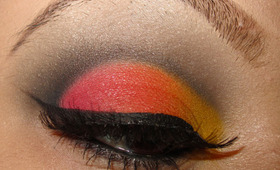
Eyes
How To: Cut a Crease
- 433



